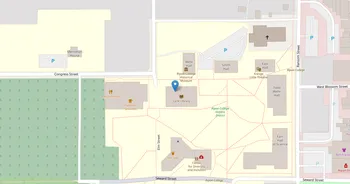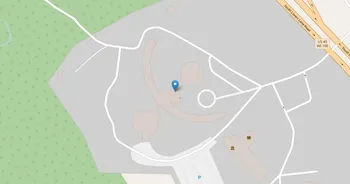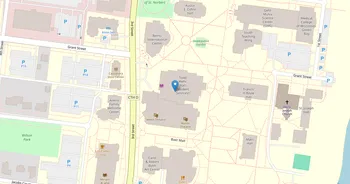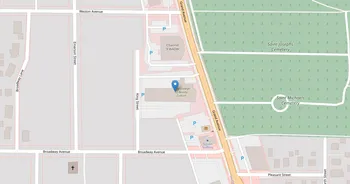Northland College : Overview, Courses, Scholarships & Rankings
About Northland College
Set beside Lake Superior's south shore, Northland College is known for hands-on learning in the natural and social sciences, the arts, and civic thinking. Classes skew discussion based, with fieldwork folded into labs and studio time. Students use research spaces, field gear, a library, and services like advising, tutoring, wellness care, and career coaching.
Life here feels outdoorsy and collaborative. Weekdays mean seminars, clubs, and coffeehouse music; weekends turn to paddling, hiking, and ski loops when winter lands. The culture values sustainability and community service without the chest beating. Career prep grows through internships with conservation groups, schools, and local businesses, plus an alumni network that keeps in touch. Ashland adds a friendly lake town scene with trails, art, and chances to pitch in. Many signature moments revolve around the water and season shifts that set the pace.
Key Institutional Details
Contact & Profile
Academic & Institutional
Academic Programs & Fields of Study
Northland College offers 26 degree programs across 16 major academic fields, graduating approximately 136 students annually. The most popular fields by graduate volume are Natural Resources (4 programs, 31 graduates), Biological Sciences (1 programs, 25 graduates), Business (1 programs, 15 graduates), Physical Sciences (3 programs, 12 graduates) and Psychology (1 programs, 9 graduates). Explore program details, award levels, and graduate demographics below.
Natural Resources (4 programs, 31 graduates)
Environmental Science and Natural Resource Management
| Program Name | Graduates | Gender Distribution | Award Levels | CIP Code |
|---|---|---|---|---|
| Natural Resources Conservation | 13 |
|
Bachelor's
|
03.9999 |
| Natural Resources Conservation and Research | 11 |
|
Bachelor's
|
03.0199 |
| Forestry | 6 |
|
Bachelor's
|
03.0599 |
| Environmental Studies | 1 |
|
Bachelor's
|
03.0103 |
Biological Sciences (1 programs, 25 graduates)
Life Sciences, Biotechnology and Biomedical Research
| Program Name | Graduates | Gender Distribution | Award Levels | CIP Code |
|---|---|---|---|---|
| Biology and Biological Sciences | 25 |
|
Bachelor's
|
26.0101 |
Business (1 programs, 15 graduates)
Business Administration, Marketing and Entrepreneurship
| Program Name | Graduates | Gender Distribution | Award Levels | CIP Code |
|---|---|---|---|---|
| Business Administration and Management | 15 |
|
Bachelor's
|
52.0201 |
Physical Sciences (3 programs, 12 graduates)
Chemistry, Physics and Earth Sciences Research
| Program Name | Graduates | Gender Distribution | Award Levels | CIP Code |
|---|---|---|---|---|
| Hydrology and Water Resources Science | 6 |
|
Bachelor's
|
40.0605 |
| Chemistry | 5 |
|
Bachelor's
|
40.0501 |
| Geology and Earth Science | 1 |
|
Bachelor's
|
40.0601 |
Psychology (1 programs, 9 graduates)
Psychological Sciences, Mental Health and Behavioral Studies
| Program Name | Graduates | Gender Distribution | Award Levels | CIP Code |
|---|---|---|---|---|
| General Psychology | 9 |
|
Bachelor's
|
42.0101 |
Kinesiology (1 programs, 7 graduates)
Exercise Science, Sports Medicine and Physical Recreation
| Program Name | Graduates | Gender Distribution | Award Levels | CIP Code |
|---|---|---|---|---|
| Outdoor Education | 7 |
|
Bachelor's
|
31.0601 |
Public Services (1 programs, 7 graduates)
Public Administration, Social Work and Community Services
| Program Name | Graduates | Gender Distribution | Award Levels | CIP Code |
|---|---|---|---|---|
| Community Organization and Advocacy | 7 |
|
Bachelor's
|
44.0201 |
Education (3 programs, 6 graduates)
Educational Sciences, Teaching Methods and Pedagogy
| Program Name | Graduates | Gender Distribution | Award Levels | CIP Code |
|---|---|---|---|---|
| Multiple Level Teacher Education | 4 |
|
Bachelor's
|
13.1206 |
| General Education | 1 |
|
Bachelor's
|
13.0101 |
| Secondary Education and Teaching | 1 |
|
Bachelor's
|
13.1205 |
Mathematics (1 programs, 5 graduates)
Mathematical Sciences, Statistics and Computational Analysis
| Program Name | Graduates | Gender Distribution | Award Levels | CIP Code |
|---|---|---|---|---|
| Mathematics | 5 |
|
Bachelor's
|
27.0101 |
Interdisciplinary (2 programs, 4 graduates)
Cross-Disciplinary Studies and Integrated Research Programs
| Program Name | Graduates | Gender Distribution | Award Levels | CIP Code |
|---|---|---|---|---|
| Climate Science | 3 |
|
Bachelor's
|
30.3501 |
| Sustainability Studies | 1 |
|
Bachelor's
|
30.3301 |
Admission Requirements & Test Scores
Comprehensive overview of admission criteria, standardized test score ranges, and application requirements for prospective students at Northland College.
Application Requirements
Data based on IPEDS for 2022-2023 academic year. Test score ranges represent the middle 50% of admitted students (25th-75th percentile). Requirements may vary by program.
Tuition, Fees & Estimated Costs
Overview of tuition rates, housing, and other annual education expenses for undergraduate and graduate students
Financial Aid & Student Support
Summary of scholarships, grants, student loans, and financial aid statistics for undergraduate students
Student Success Metrics
Graduation rates and post-graduation earnings to help assess student outcomes and long-term value of education.
Loan Burden & Repayment Outcomes
Breakdown of loan repayment rates and student debt levels by income and dependency status.
Frequently Asked Questions
Find answers to the most common questions about Northland College
How much does it cost to attend Northland College?
The annual tuition at Northland College is $42,491 for in-state students. When including room and board, books, and other expenses, the total estimated cost is approximately $57,041 for in-state students. Additional costs include room and board $11,100 and books and supplies $800.
Data based on IPEDS program completions for 2022-2023 academic year. Tuition and cost estimates are approximate and may not include all fees, personal expenses, or transportation costs.
What academic programs and degree levels does Northland College offer?
Northland College offers 26 academic programs across 16 major fields of study, with available degree levels: Bachelor's.
Most popular program areas include:
- Environmental Science and Natural Resource Management (4 programs)
- Life Sciences, Biotechnology and Biomedical Research (1 programs)
- Business Administration, Marketing and Entrepreneurship (1 programs)
- Chemistry, Physics and Earth Sciences Research (3 programs)
- Psychological Sciences, Mental Health and Behavioral Studies (1 programs)
Data based on IPEDS program completions for 2023-2024 academic year. Numbers reflect programs where students graduated, not all offered programs.
What is the acceptance rate for Northland College?
Northland College has an 71.8% acceptance rate and a 16% yield rate, making it selective.
Admission statistics breakdown:
- Total applicants: 894
- Students admitted: 642
- Students enrolled: 103
Data based on IPEDS for 2022-2023 academic year. Admission statistics may vary by program and application cycle.
What financial aid and scholarships are available at Northland College?
Northland College provides financial aid to 24% of first-time, full-time students, with average grants of $30,355 and average loans of $8,527.
Average financial aid amounts by type:
- Pell grants: $4,773
- State/Local grants: $3,444
- Institutional grants: $27,968
- Federal loans: $4,977
The university supports 122 students with grants and 79 students with loans annually.
Data based on IPEDS for 2022-2023 academic year. Financial aid amounts and percentages may vary by program, enrollment status, and individual circumstances.
What is the average salary for Northland College graduates?
Northland College graduates earn a median salary of $35,819 after 6 years and $44,560 after 10 years.
The salary range 10 years after graduation spans from $32,956 (25th percentile) to $57,708 (75th percentile), with top earners reaching $59,900 (90th percentile).
Data based on IPEDS for 2022-2023 academic year. Salary data reflects graduates who received federal financial aid (approximately 60% of all graduates). Actual earnings may vary significantly based on program, location, and individual circumstances.
Related Universities




Found something useful? Help others discover it too! Share with friends, on social media, or save for later - every share helps someone find the information they need.